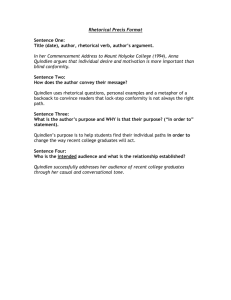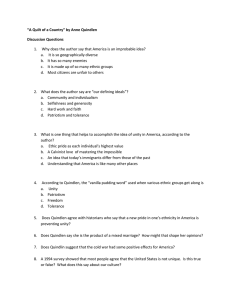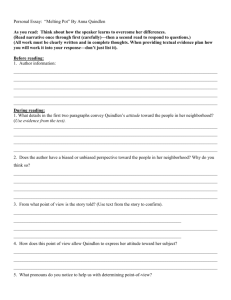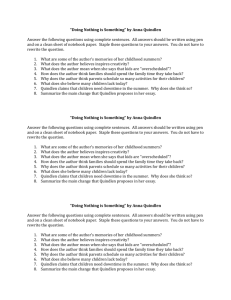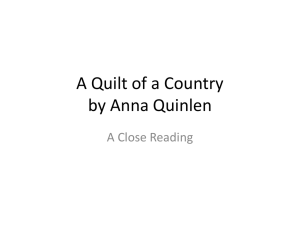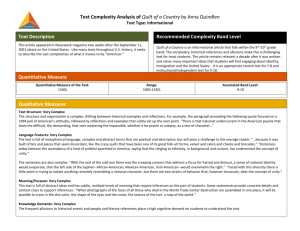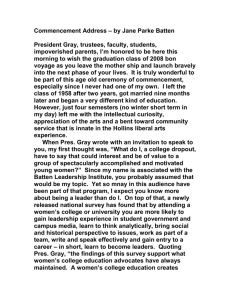Analysis of `The Problem of the Color Line`
advertisement
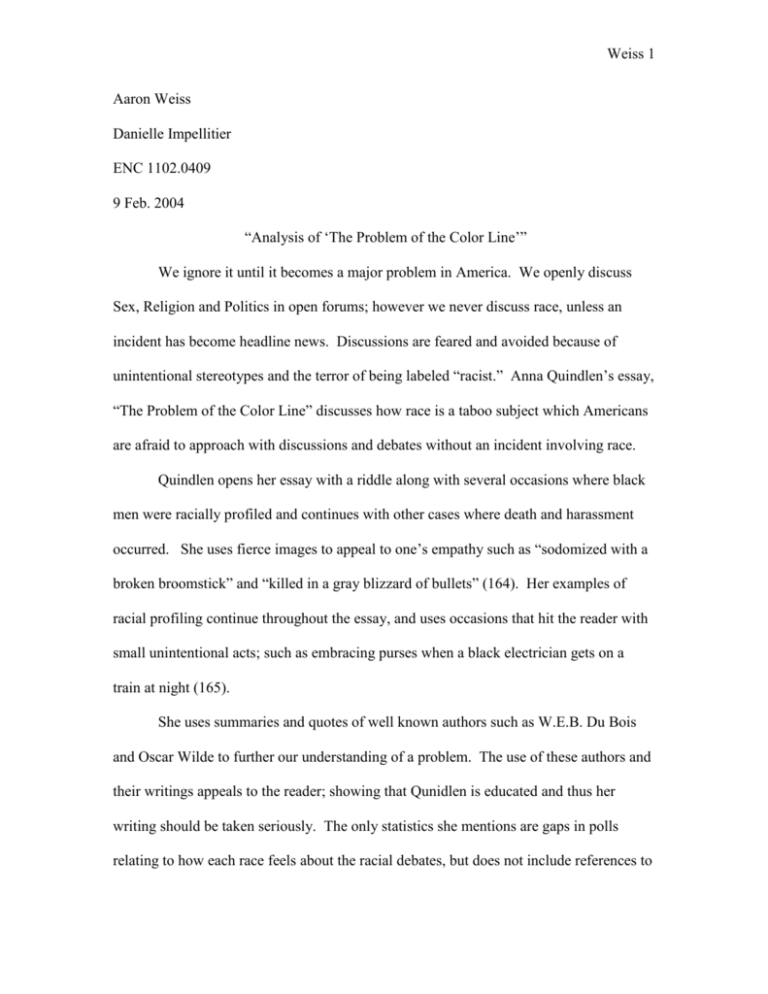
Weiss 1 Aaron Weiss Danielle Impellitier ENC 1102.0409 9 Feb. 2004 “Analysis of ‘The Problem of the Color Line’” We ignore it until it becomes a major problem in America. We openly discuss Sex, Religion and Politics in open forums; however we never discuss race, unless an incident has become headline news. Discussions are feared and avoided because of unintentional stereotypes and the terror of being labeled “racist.” Anna Quindlen’s essay, “The Problem of the Color Line” discusses how race is a taboo subject which Americans are afraid to approach with discussions and debates without an incident involving race. Quindlen opens her essay with a riddle along with several occasions where black men were racially profiled and continues with other cases where death and harassment occurred. She uses fierce images to appeal to one’s empathy such as “sodomized with a broken broomstick” and “killed in a gray blizzard of bullets” (164). Her examples of racial profiling continue throughout the essay, and uses occasions that hit the reader with small unintentional acts; such as embracing purses when a black electrician gets on a train at night (165). She uses summaries and quotes of well known authors such as W.E.B. Du Bois and Oscar Wilde to further our understanding of a problem. The use of these authors and their writings appeals to the reader; showing that Qunidlen is educated and thus her writing should be taken seriously. The only statistics she mentions are gaps in polls relating to how each race feels about the racial debates, but does not include references to Weiss 2 these polls. She redeems herself, however stating “that gap mirrors a gap more important than numbers” (165). Quindlen is correct on the fact that Americans are afraid to voice their opinions on race. Even the unintentional use of stereotypes poses the threat of being pointed at being labeled a “racist”, the scarlet word that can ruin one’s appeal toward those of other races. She understands that and does not forget to show that the “police officers are just wearing uniforms. The assumptions and prejudices they carry with them are the assumptions and prejudices of their roots, their neighbor, their society” (164). The one statement that Anna does not point out was that: why white Americans continue believe in the stereotypes of black Americans? While she does not hesitate to ask why we do not discuss race, she also does not even ask why there is a possibility these events of racial profiling happen. The word “stereotype” does not even come up in the essay, which is a major flaw. Mild implications of stereotypes are found within the document, however there is still no solid argument why one would wonder why “a mall security guard trails the only black customer in the store” (165). We should ask: “What stereotype would a mall security guard imply if he trailed the only black customer in the store?” She ignores that stereotypes are one of the implications used when it comes to racial profiling. Quindlen gives us a handful of occasions where individuals were targeted, but does not give us the whole situation. Amadou Diallo was shot by police men because he pulled out a wallet after being questioned by police about a raping, which he was a suspect. She fails to tell her Newsweek audience that Diallo was a suspect of a crime. This certainly lowers her creditability; she has not told her audience all the facts, only Weiss 3 what she wanted them to hear. Quindlen fails to recognize that officers are trained to react if any suspect in custody reaches for their pocket(s). Diallo’s killing was not an act of racial profiling or some accident, but simply a scenario that ended in the death of an innocent man. Last, Quindlen does not even discuss one possibly solution to the lack of racial discussion in America. Quindlen fails to provide examples to reach out to the community and discuss this controversial issue. Shows such as Dave Chapelle Show, Politically Incorrect and Tough Crowd use social commentaries provide comedic means to generate a message toward viewers about recent and controversial issues. On these shows we often see guest comedians, politicians and actors to express their opinions of issues, especially race. While these shows are more current than Anna’s 2000 Newsweek article, but they contain the discussions that Quindlen had provoked. While applause is due to Quindlen for even raising the issue, she does not completely deliver. We are given many occasions of racial profiling and targets of violence. She does not give us all the information about these incidents, such as Diallo’s case. She only lists the problems but does not provide solutions in her essay. Overall, Anna Quidlen’s essay generally does not provide the facts to continue an argument which appeals toward Newsweek readers. Throwing quotations from popular authors and lack of logic is not enough to settle arguments and have readers take action. Quindlen’s “The Problem with the Color Line” contains problems with facts and providing the basis of a persuasive argument. Weiss 4 Works Cited Quindlen, Anna. “The Problem of the Color Line.” Discovering Arguments. Ed. Dean Memering and William Palmer. Upper Saddle River: Prentice Hall, 2002. 164165. Weiss 5 “Bibilography” Lynch, Timorthy. “We Own the Night.” Cato Briefing Papers. 8 Feb. 2004 <http://www.cato.org/pubs/briefs/bp56.pdf>.
